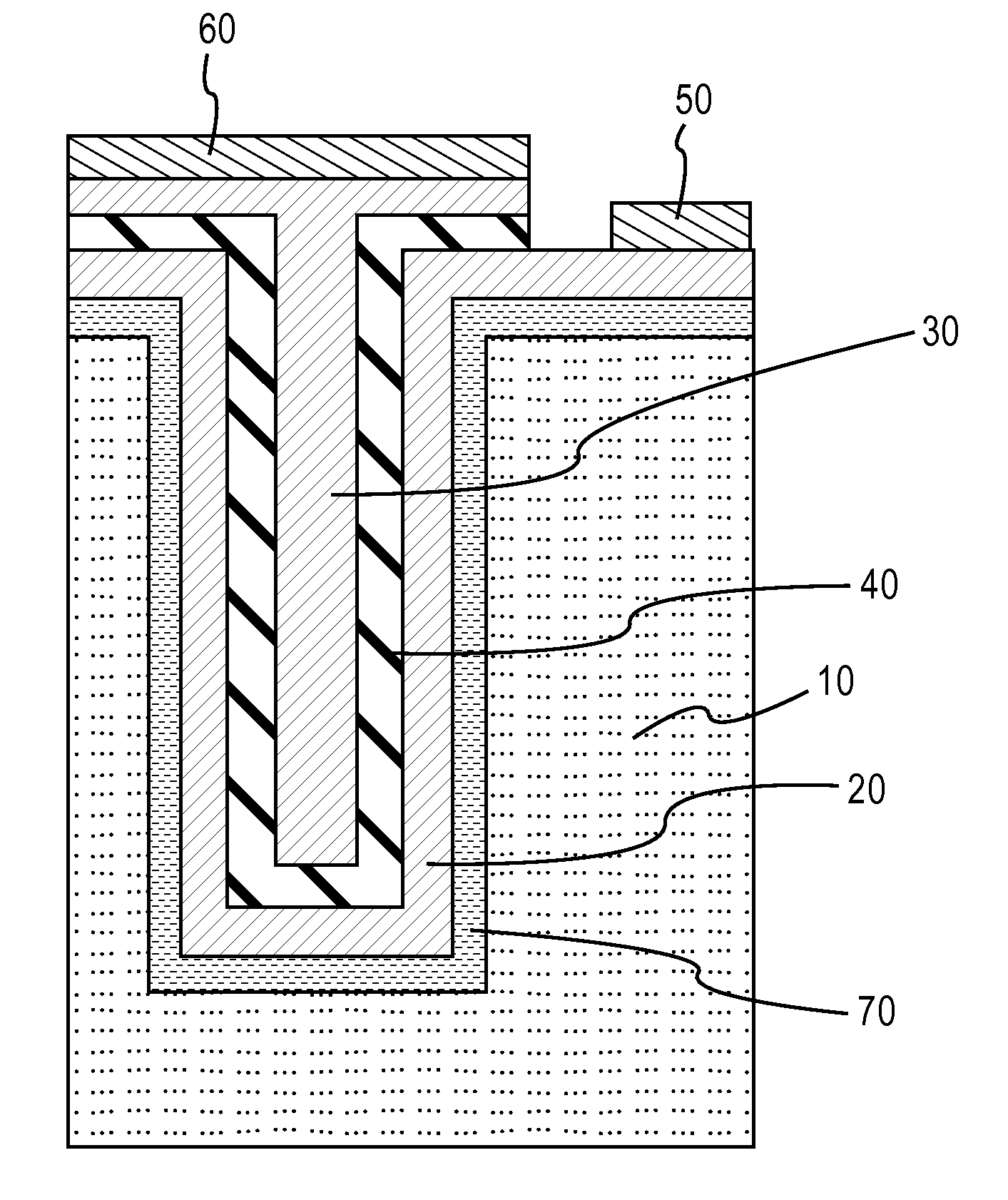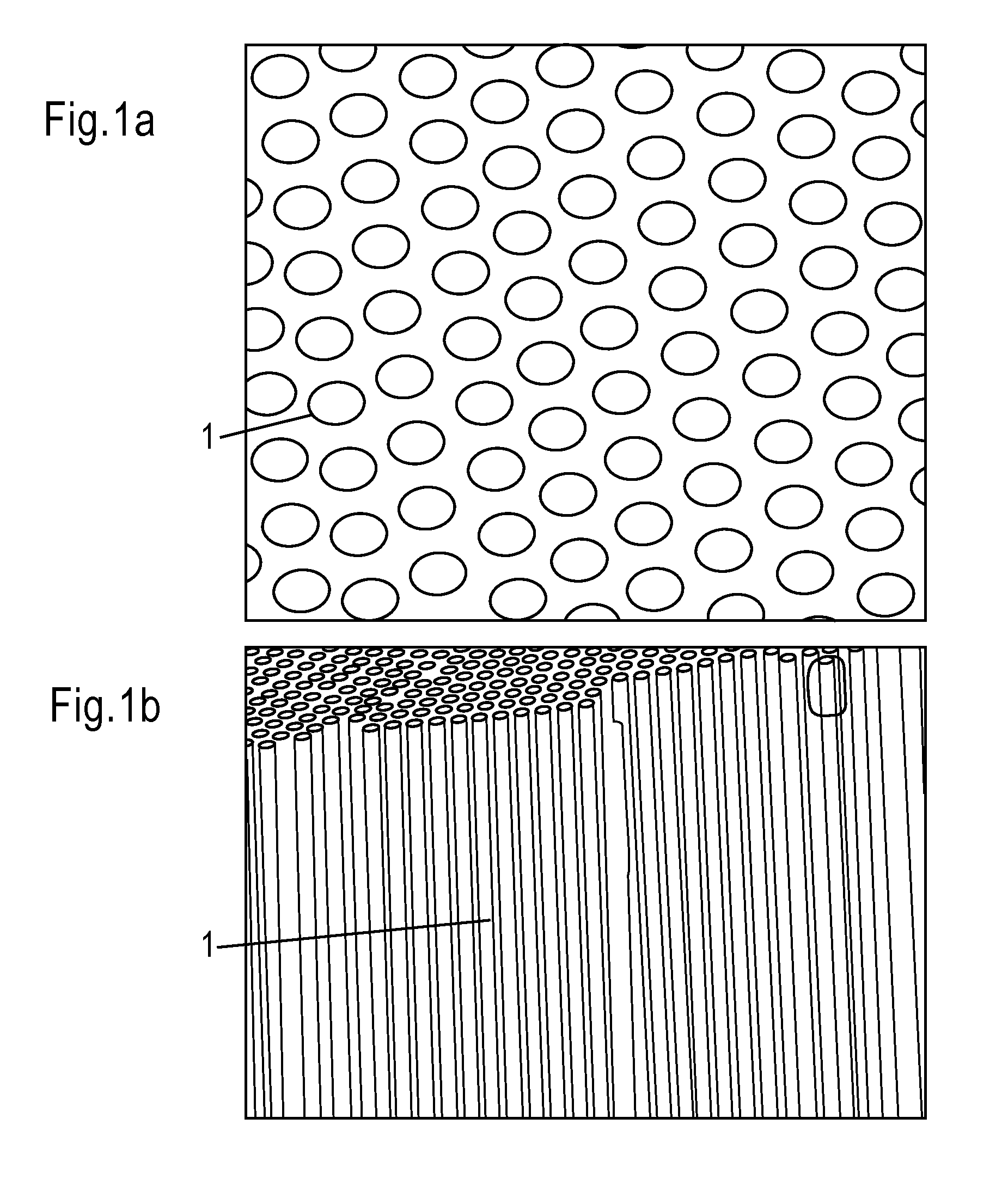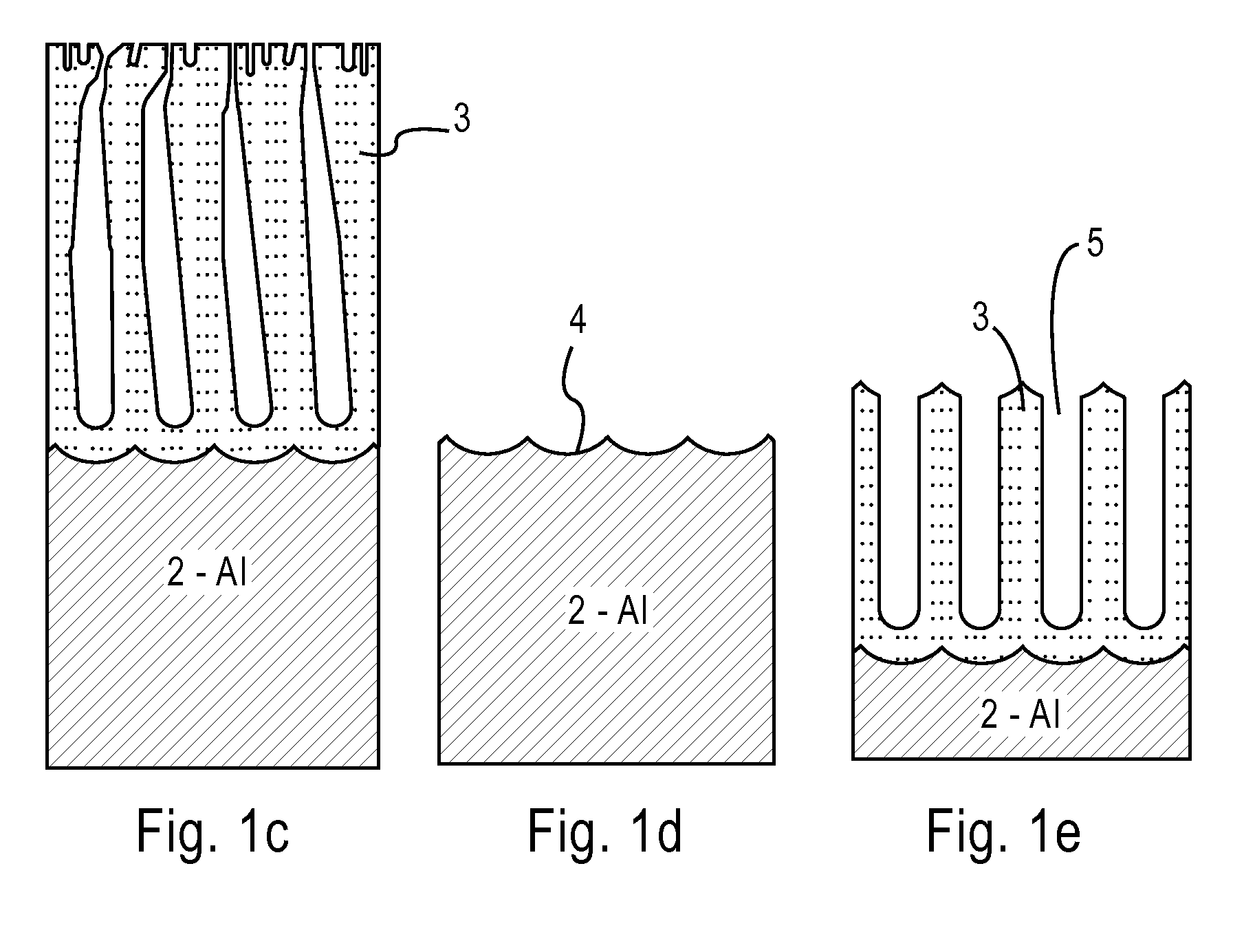Nanodevice arrays for electrical energy storage, capture and management and method for their formation
a technology of electrical energy storage and nano-devices, applied in the field of nano-device arrays for electrical energy storage, capture and management, can solve the problems of limited conventional solar cell devices, electrostatic capacitors that store charge at the surface of electrodes typically do not achieve high areal densities of electrodes, and electrochemical supercapacitors and batteries that store charge inside their active surfaces and at the surface can experience similar limitations to conventional solar cell devices
- Summary
- Abstract
- Description
- Claims
- Application Information
AI Technical Summary
Benefits of technology
Problems solved by technology
Method used
Image
Examples
Embodiment Construction
[0034]Embodiments of the invention provide two-terminal nanodevice arrays that utilize nanostructures having nanopores formed by anodic oxidation of aluminum, and thin films deposited by atomic layer deposition (ALD) and electrochemical deposition (ECD) to form devices in the nanopores. These nanostructures may be coupled to one another to form larger assemblies suitable for power and energy systems.
[0035]Certain embodiments of the invention provide two-terminal nanodevice arrays for capture, generation and storage of energy based on multi-component materials contained within nanoscale pores in aluminum oxide or another dielectric material. A plurality of these nanodevice arrays may be wired in parallel to capture energy from light, either solar or ambient, and to generate energy from temperature gradients sensed by thermoelectric devices.
[0036]Embodiments of the invention provide electrostatic capacitors, electrochemical capacitors, and batteries for energy storage, whereby device ...
PUM
 Login to View More
Login to View More Abstract
Description
Claims
Application Information
 Login to View More
Login to View More - R&D
- Intellectual Property
- Life Sciences
- Materials
- Tech Scout
- Unparalleled Data Quality
- Higher Quality Content
- 60% Fewer Hallucinations
Browse by: Latest US Patents, China's latest patents, Technical Efficacy Thesaurus, Application Domain, Technology Topic, Popular Technical Reports.
© 2025 PatSnap. All rights reserved.Legal|Privacy policy|Modern Slavery Act Transparency Statement|Sitemap|About US| Contact US: help@patsnap.com



